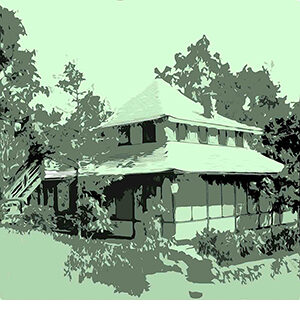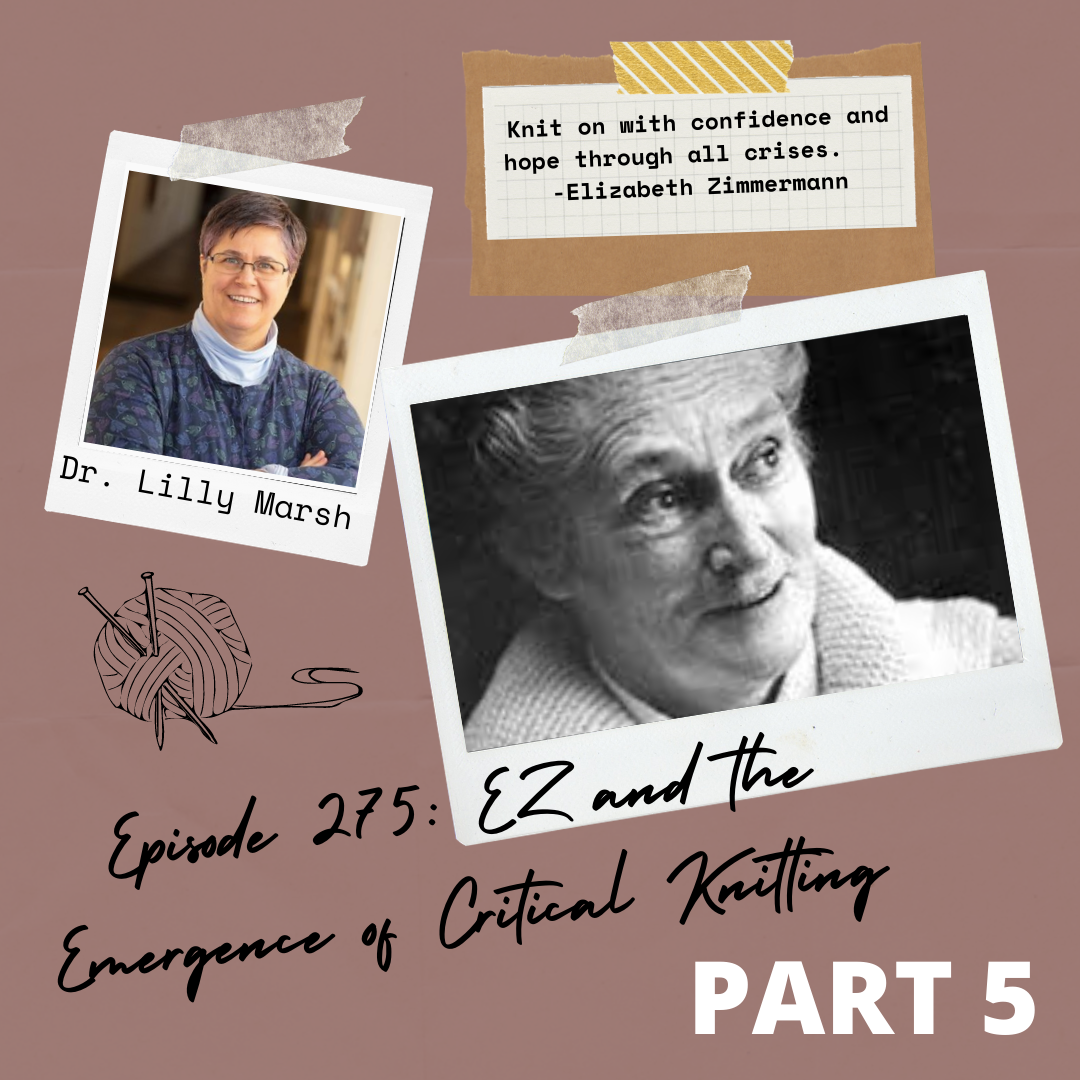Episode 275
This episode centers on discussion of Elizabeth Zimmermann’s newsletters — how they evolved over time from a sales list to the biennial publication Wool Gathering; how they became a means for EZ to share knitting designs and variations in template form; and most importantly, how the newsletters helped to make a growing knitting community visible to itself. Dr. Lilly Marsh, engaging and entertaining as ever, shares evidence and details from her research.
Dr. Lilly has shared a slideshow of images featuring EZ’s published patterns. You can find a video of the slideshow on YouTube.
Comments are welcome! You are invited to post your comment to this blog post. You may also contact Dr. Lilly via her website, Lilly Marsh Studios. Finally, there is a thread with lively chatter on the Yarns at Yin Hoo group on Ravelry.
The images presented here are a very small piece of a much larger published work, and are included here for the purpose of scholarship.
Notwithstanding the provisions of sections 106 and 106A, the fair use of a copyrighted work, including such use by reproduction in copies or phonorecords or by any other means specified by that section, for purposes such as criticism, comment, news reporting, teaching (including multiple copies for classroom use), scholarship, or research, is not an infringement of copyright. In determining whether the use made of a work in any particular case is a fair use the factors to be considered shall include—
(1) the purpose and character of the use, including whether such use is of a commercial nature or is for nonprofit educational purposes;
(2) the nature of the copyrighted work;
(3) the amount and substantiality of the portion used in relation to the copyrighted work as a whole; and
(4) the effect of the use upon the potential market for or value of the copyrighted work.
The fact that a work is unpublished shall not itself bar a finding of fair use if such finding is made upon consideration of all the above factors.


Hi, Barby. Thank you for sharing your story. I know Dr. Lilly will also appreciate that you have an interest in EZ and her work based on this series. I hope you continue to sniff around and find out more about your mother’s possible connections to EZ. Happy knitting!
Just a few weeks ago I stumbled onto Yarns at Yin Hoo-can’t even remember now the trail I followed. The ongoing interview with Lilly M about EZ is so amazingly interesting. Of course I knew EZ’s name and watched the Fruity Knitting segment with her daughter, but I hadn’t really pursued any of her books or patterns. I am now reading Knitting Without Tears and laughing all the way through. She is hysterical. My mother had a knit shop in the late 60s-70s and I’m just so curious to know if she knew about EZ. I asked my 97 yo Dad if she ever mentioned EZ’s name but he had no memory of that. Thank you so much for enlightening me. I may never design my own pattern but this sure adds to my appreciation of how knitting has changed since my mother taught me 60+ years ago at age 10. My stash also attests to it. Anyone want some yarn?
It is a real thrill to hear these explorations into EZs life and work. Thank you! For the Therese de Dillmont book, Encyclopedia of Needlework, they are still around, though a bit pricey, and a treasure trove of useful information. FYI It’s also been digitized, https://www.gutenberg.org/files/20776/20776-h/20776-h.htm.
Hi, Silvia. Thank you for sharing your story about the importance of keeping these fiber traditions alive and sharing them with young people — or anyone who wants to learn. It’s a great way to honor the legacy of EZ!
So delightful and inspiring. EZ laid the foundation for our community of today and we are responsible for carrying the torch of “democratic craftsmanship” and sharing with others. I recently received a message from a young friend about an antique spinning wheel she had purchased and that she was having trouble getting going at the process. She would be happy to pay me for lessons. I responded that I would be thrilled to help her and I did not want payment other than the joy of having another person come to love the process of working with fibre and making yarn. It is akin the passing knowledge to the next generation to ensure the knowledge is not lost and that they add to it for the subsequent generation. There is a place for paid lessons and workshops but if we continually monetize the passing of knowledge we are right back to the time prior to EZ and her building of community.